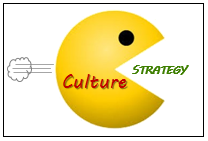
The mystery of corporate culture
A lot has been written about the mystery of corporate culture – the “secret sauce of success” in an organization that creates disproportionate value, but is poorly understood. Some say that it is impossible to measure, although there is a large industry out there that purports to measure culture.
There are many different definitions of culture, one of the most popular being “the way we do things around here”. A slightly more academic slant would venture that it relates to established behaviours and norms in the organization, and these are rarely codified.
Most of those companies that do measure the ‘unmeasurable’ in some way rely on measuring behaviours. Agreement amongst employees that certain behaviours are prevalent then constitutes a measure of the culture of the organization. This approach represents a focus on outcomes (behaviours), very much like a focus on profits.
To read more, please click here.












